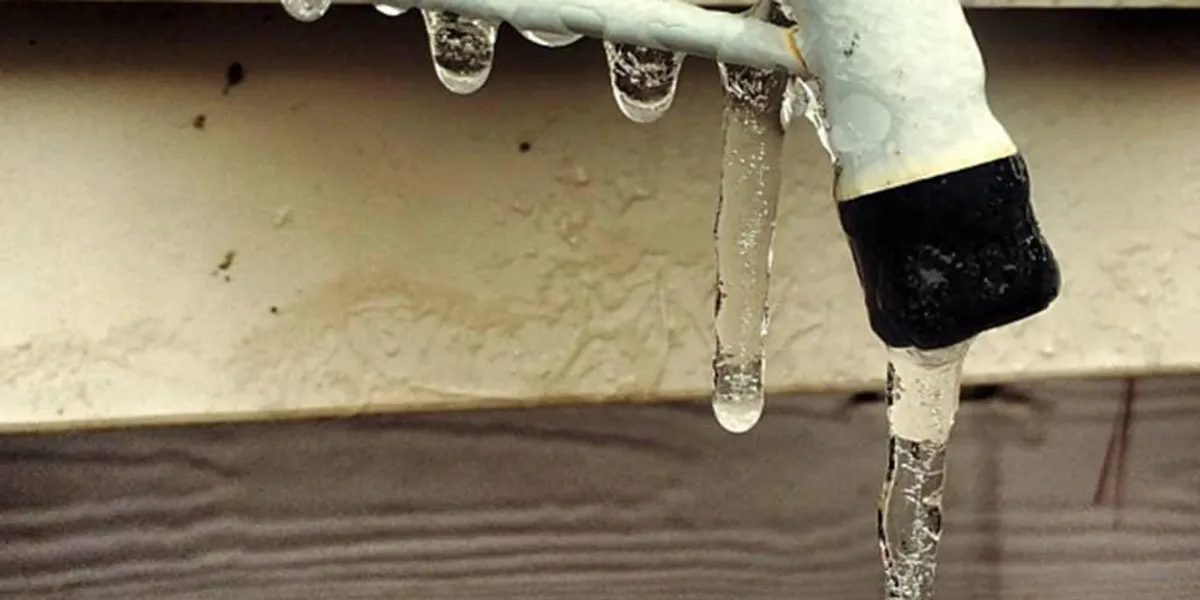Critical Approaches for Avoiding Frozen Pipes in Cold Weather
Critical Approaches for Avoiding Frozen Pipes in Cold Weather
Blog Article
We have uncovered this great article on How to prepare your home plumbing for winter weather below on the web and felt it made perfect sense to talk about it with you in this article.

Winter can ruin your pipes, specifically by freezing pipelines. Below's just how to stop it from taking place and what to do if it does.
Intro
As temperature levels decline, the threat of frozen pipes rises, possibly bring about expensive repairs and water damage. Recognizing just how to prevent frozen pipes is important for home owners in cool environments.
Avoidance Tips
Shielding susceptible pipes
Wrap pipes in insulation sleeves or use warm tape to safeguard them from freezing temperature levels. Concentrate on pipes in unheated or exterior locations of the home.
Home heating methods
Maintain indoor rooms properly warmed, especially areas with plumbing. Open up cupboard doors to permit cozy air to circulate around pipes under sinks.
Exactly how to determine icy pipelines
Look for reduced water circulation from taps, uncommon smells or sounds from pipes, and noticeable frost on subjected pipelines.
Long-Term Solutions
Architectural adjustments
Think about rerouting pipes far from exterior walls or unheated areas. Add extra insulation to attics, basements, and crawl spaces.
Upgrading insulation
Buy top quality insulation for pipes, attic rooms, and wall surfaces. Appropriate insulation helps keep regular temperatures and decreases the threat of icy pipes.
Protecting Exterior Pipes
Garden hose pipes and outdoor faucets
Separate and drain garden pipes before winter season. Mount frost-proof faucets or cover outdoor taps with insulated caps.
Recognizing Frozen Pipes
What triggers pipes to ice up?
Pipes ice up when subjected to temperatures listed below 32 ° F (0 ° C) for expanded periods. As water inside the pipelines ices up, it increases, putting pressure on the pipe wall surfaces and possibly creating them to break.
Risks and damages
Frozen pipes can result in water supply disruptions, building damages, and pricey repairs. Burst pipes can flooding homes and create considerable architectural damage.
Indications of Frozen Pipeline
Identifying icy pipelines early can avoid them from bursting.
What to Do If Your Pipes Freeze
Immediate activities to take
If you presume frozen pipelines, keep faucets open up to ease pressure as the ice thaws. Utilize a hairdryer or towels taken in warm water to thaw pipes gradually.
Conclusion
Protecting against frozen pipelines needs aggressive steps and fast reactions. By recognizing the causes, indications, and safety nets, property owners can secure their pipes during cold weather.
5 Ways to Prevent Frozen Pipes
Drain Outdoor Faucets and Disconnect Hoses
First, close the shut-off valve that controls the flow of water in the pipe to your outdoor faucet. Then, head outside to disconnect and drain your hose and open the outdoor faucet to allow the water to completely drain out of the line. Turn off the faucet when done. Finally, head back to the shut-off valve and drain the remaining water inside the pipe into a bucket or container. Additionally, if you have a home irrigation system, you should consider hiring an expert to clear the system of water each year.
Insulate Pipes
One of the best and most cost-effective methods for preventing frozen water pipes is to wrap your pipes with insulation. This is especially important for areas in your home that aren’t exposed to heat, such as an attic. We suggest using foam sleeves, which can typically be found at your local hardware store.
Keep Heat Running at 65
Your pipes are located inside your walls, and the temperature there is much colder than the rest of the house. To prevent your pipes from freezing, The Insurance Information Institute suggests that you keep your home heated to at least 65 degrees, even when traveling. You may want to invest in smart devices that can keep an eye on the temperature in your home while you’re away.
Leave Water Dripping
Moving water — even a small trickle — can prevent ice from forming inside your pipes. When freezing temps are imminent, start a drip of water from all faucets that serve exposed pipes. Leaving a few faucets running will also help relieve pressure inside the pipes and help prevent a rupture if the water inside freezes.
Open Cupboard Doors
Warm your kitchen and bathroom pipes by opening cupboards and vanities. You should also leave your interior doors ajar to help warm air circulate evenly throughout your home.

I ran across that article about How to prepare your home plumbing for winter weather when perusing the search engines. Loved our article? Please share it. Help another person check it out. Thank you so much for going through it.
Suggested Site Report this page